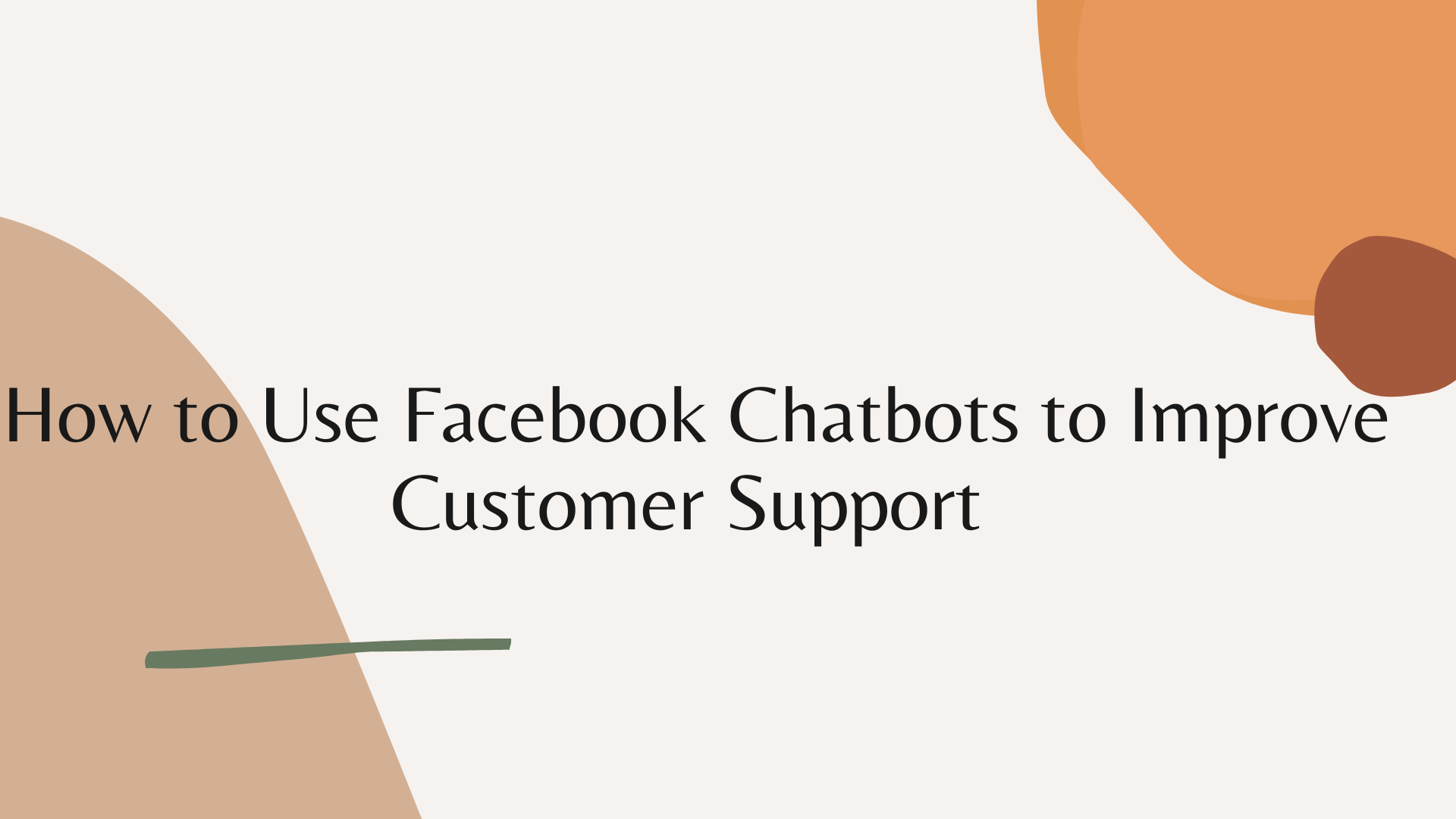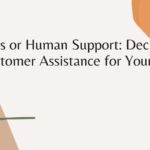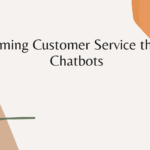In today’s fast-paced digital world, customer support plays a vital role in the success of any business. With millions of users actively engaging on social media platforms, Facebook has emerged as a valuable channel for businesses to connect with their customers. One innovative tool that has revolutionized customer support on Facebook is chatbots. In this comprehensive guide, we will explore how you can effectively use Facebook chatbots to improve your customer support and enhance overall user satisfaction.
1. Understanding Facebook Chatbots
Before diving into implementation, it’s crucial to grasp the concept of Facebook chatbots. Chatbots are AI-powered virtual assistants designed to interact with users in a conversational manner. They can respond to user queries, provide information, and even execute specific tasks autonomously. By integrating chatbots into your Facebook business page, you can automate customer interactions and deliver timely responses, 24/7.
2. Setting Up Facebook Chatbots
To get started, access Facebook’s chatbot development platform and follow the step-by-step instructions to set up your bot. Define its objectives, tone of communication, and design a user-friendly interface. Ensure that your chatbot’s language and responses align with your brand’s voice to create a consistent customer experience.
3. Tailoring Chatbots for Customer Support
To optimize your chatbot for customer support, focus on the following key aspects:
a. Frequently Asked Questions (FAQs):
Identify the most common customer queries and train your chatbot to address them effectively. This enables quick resolution and reduces the workload on your human support agents.
b. Natural Language Processing (NLP):
Implement NLP capabilities to make your chatbot more versatile in understanding user intent and providing accurate responses. This feature makes interactions more human-like, leading to a smoother user experience.
c. Escalation Protocol:
While chatbots can handle many queries, some situations might require human intervention. Establish a seamless escalation protocol that transfers complex issues to your support team, ensuring customers feel heard and valued.
d. Personalization:
Utilize user data to personalize chatbot responses, addressing customers by their names and tailoring solutions based on their past interactions. Personalization enhances engagement and fosters a positive brand perception.
4. Promoting Your Chatbot
Even the most sophisticated chatbot won’t be effective if users aren’t aware of its existence. Promote your Facebook chatbot through various channels, such as social media posts, email newsletters, and website banners. Encourage users to interact with the chatbot by highlighting the convenience and benefits it offers.
5. Monitoring and Optimization
Regularly monitor your chatbot’s performance and gather user feedback to identify areas for improvement. Analyze common issues users face and update your chatbot’s responses accordingly. Continuously fine-tuning your chatbot ensures it remains a valuable asset in your customer support strategy.
6. Integration with CRM Systems
To maximize the impact of your chatbot, integrate it with your Customer Relationship Management (CRM) system. This integration enables the chatbot to access customer data, purchase history, and previous interactions, facilitating more personalized and informed responses.
7. Ensuring a Human Touch
While chatbots are incredible assets, it’s essential to maintain a balance between automation and the human touch. Customers appreciate genuine interactions, especially in emotionally charged situations. Make sure your support team is readily available to step in when required, providing empathy and understanding.
8. Handling Customer Feedback
Use your chatbot as a tool for collecting customer feedback after resolving their queries. This valuable data can help identify recurring issues, gauge customer satisfaction levels, and implement necessary improvements to enhance your overall customer support process.
Recommended reading: Maximizing Sales: 7 Ways Chatbots for Sales Benefit Your Business
Frequently Asked Questions
1. How can chatbots improve customer service?
Chatbots can significantly enhance customer service in various ways:
24/7 Availability:
Unlike human agents, chatbots can operate round-the-clock, providing instant responses to customer queries at any time, improving response times and customer satisfaction.
Quick and Consistent Responses:
Chatbots can process large volumes of inquiries simultaneously, ensuring customers receive consistent and accurate information without delays.
Cost-Efficiency:
Implementing chatbots reduces the need for a large customer support team, leading to cost savings for businesses without compromising service quality.
Handling Repetitive Tasks:
Chatbots excel at handling routine and repetitive tasks, such as providing order status updates or answering frequently asked questions, freeing up human agents to focus on more complex issues.
Personalization:
Advanced chatbots can use data from past interactions to personalize responses, making customers feel valued and enhancing their overall experience.
2. How Facebook uses chatbots?
Facebook employs chatbots in various ways to improve user experience and interaction on the platform:
Messenger Bots:
Facebook allows businesses to create and integrate chatbots into their Facebook Messenger accounts. These bots can engage with customers, provide support, and even process orders or bookings.
Automated Replies:
Facebook Pages can use chatbots to automatically respond to messages from users, acknowledging their inquiries and providing relevant information, even when the business is offline.
Personal Assistants :
Chatbots on Facebook can act as personal assistants, helping users find information, schedule appointments, or make purchases, all within the familiar Messenger interface.
News and Updates:
Some media outlets and brands use chatbots on Facebook to deliver personalized news updates or product information directly to users’ Messenger inboxes.
3. How do I implement a chatbot on Facebook?
To implement a chatbot on Facebook, follow these steps:
Choose a Platform:
Select a chatbot development platform that suits your needs and technical expertise, such as Dialogflow, ManyChat, or Chatfuel.
Define Objectives:
Clearly outline the purpose of your chatbot – whether it’s providing customer support, generating leads, or offering personalized recommendations.
Design Conversations:
Create conversational flows that align with user interactions, ensuring the chatbot feels natural and engaging.
Integration:
Connect your chatbot with your Facebook Page and Messenger account, granting it the ability to interact with users.
Testing and Iteration
Thoroughly test your chatbot to identify and fix any issues or bugs. Continuously iterate and improve its responses based on user feedback and data.
Promotion:
Promote your chatbot through various channels to encourage users to interact with it and benefit from its capabilities.
4. How do chatbots improve customer engagement?
Chatbots contribute to improved customer engagement in several ways:
Proactive Interaction:
Chatbots can initiate conversations with users, offering assistance or personalized recommendations, which encourages users to engage with the brand.
Conversational Experience:
Chatbots provide a natural and interactive conversational experience, resembling human interactions, making users more comfortable engaging with the bot.
Personalization:
By using past interactions and user data, chatbots can tailor responses to each user, creating a personalized experience that fosters stronger connections.
Gamification:
Some chatbots incorporate gamification elements, such as quizzes or challenges, to entertain users and keep them engaged.
Feedback Collection:
Chatbots can efficiently collect feedback from users after resolving their queries, giving businesses valuable insights to enhance their products or services.
Overall, chatbots bring a level of accessibility, convenience, and personalization that improves customer engagement, leading to stronger relationships between businesses and their customers.
Further reading: How Chatbots Can Help Businesses Generate Leads?
Conclusion
Facebook chatbots have revolutionized the way businesses offer customer support on social media. By leveraging the power of AI-driven automation, you can improve response times, enhance user experience, and strengthen your brand’s reputation. Implementing chatbots into your customer support strategy can lead to higher customer satisfaction rates, increased efficiency, and a competitive edge in today’s digital landscape. Embrace this technology, and you’ll be on the path to elevating your customer support to new heights.





